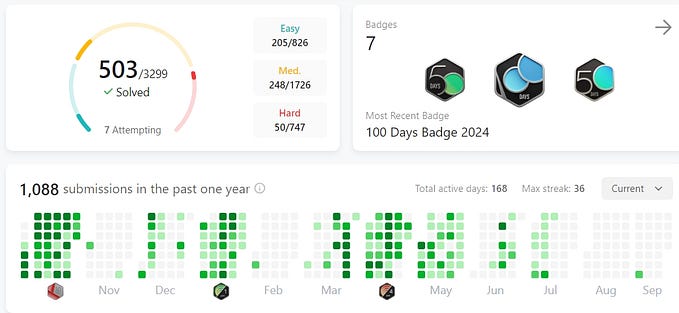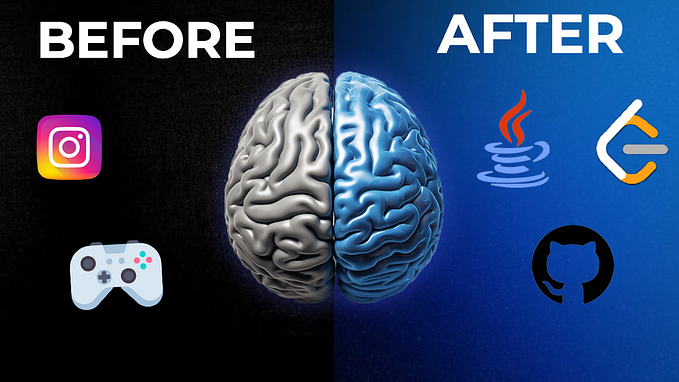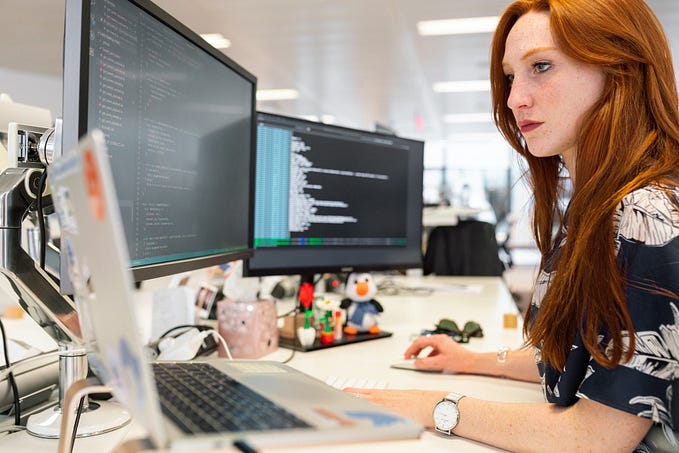Calling all software engineers — here’s how to code your way to a better climate

Sustainability has always been a hot topic — but never more so than now. With This is Engineering Day seeking to raise awareness of the breadth of engineering and celebrate engineers’ contributions to society by challenging narrow public perceptions of the profession, and COP26 — where 190 world leaders will continue discussions about combatting climate change and how they will reach their net-zero carbon emissions target by 2050, the pressure on the fight against climate change has definitely turned up a notch.
Quite the challenge, isn’t it? Luckily, the global tech community is up to the task. Contrary to popular belief, software development as a field has a significant role to play in shaping our future. After all, developers are responsible for constructing the digital products and experiences that influence our daily lives.
Could software engineers help make the world a more sustainable place? Is it possible to make coding methods more energy efficient? How can we apply for tech jobs with better environmental judgment? Read on for our practical guide to coding your way to a better climate.
1. Stop using spaghetti Code
Carbon footprints from gadgets, the internet, and the systems they support account for 3.7% of global greenhouse gas emissions and are expected to double by 2025. You might be wondering, what’s driving technology to eat up so much energy?
There’s a straightforward reason for this. The millions of lines of code written and stored in the cloud require a continuous supply of electricity (and an enormous amount of it). However, there is a solution to this energy-consuming data reading: removing Spaghetti Code. Often, spaghetti code refers to a tangled web of programming source code that is difficult to follow, meaning control within the program jumps all over the place. There has been a reduction in spaghetti code due to the rise of more structured programmes, like object-oriented languages. Nevertheless, there are still many lines of code in cloud programs that require refactoring.
Wholegrain Digital Agency co-founder Tom Greenwood offers advice on how developers can contribute to a greener tech space. As outlined in his book, Sustainable Web Design, he emphasises that “you can easily reduce the amount of data on a web page by 60 per cent” and specifies that it is an easy change to implement. Among Greenwood’s suggestions for reducing code density are removing animations when they are not needed and deleting commented-out code.
In the same way, following the 5S principles is a good rule of thumb for organising your ideas. First implemented by Toyota Motor Corporation, the 5S methodology originated in Japan and was initially developed to make just-in-time (JIT) manufacturing possible. Seiri (organisation). Click here for more information.
2. Change the world by changing people’s habits
Even within our personal sphere of influence, it’s easy to feel overwhelmed by the task ahead of us in the fight against climate change. Apps have made it easier for people to reduce their carbon footprint in small, manageable steps and to track their progress, so they feel more capable of reducing it.
Over the years, developers have found a way to create software that encourages users to shop sustainably, eat less meat, recycle, reduce water waste, and even make smarter consumer decisions — proving that we can change human habits with technology.
In need of some inspiration? Take a look at Giki Zero — an interactive website designed to help users learn, track and reduce their carbon footprint. The platform breaks down different areas of your life, from eating habits to your choice of travel. It offers 120 steps to change or reduce those habits and celebrate your carbon-neutral accomplishments.
3. Get inspired with these climate change apps
In the last few years, efforts to reduce carbon emissions and offer practical solutions have grown stronger, more ambitious, capable, and diverse. In the tech industry, there has been a boom of apps that speak to issues related to climate change. If you’re thinking about designing an app to fight climate change, why not take inspiration from the current market leaders. Remember, there will always be more than one stone left unturned, especially in the world of software development.
Capture
The Capture app uses GPS information to estimate your travel carbon footprint and then calculates your CO2 emissions based on those travel patterns. You and your team can also participate in various sustainable challenges at work, such as opting for vegetarian lunches, encouraging each other to take public transportation, and reducing single-use plastic in the office.
Joro
With Joro, you can calculate the carbon footprint of what you buy. This app informs the user of the total carbon intensity of production, transportation, and disposal of your purchase item. Using this tool, you can compare the relative climate impact of spending money on fast-fashion items versus dining out and develop a carbon intuition.
Ailuna
Based on behavioural science, Ailuna uses digital technology to help you set and achieve green goals, cultivate low-waste, low-carbon habits, and track your progress towards a greener world. By assigning people “dares” of all kinds, the app helps people adapt to new habits — maybe it’s to stop using single-use cups, make sustainable swaps in the bathroom, or cycle to work.
4. Join an eco-conscious company
Whether you’re a newcomer to the software industry or an industry veteran looking for your next challenge — the company you join can influence your carbon footprint significantly.
When you strive to reduce your carbon footprint, you should realise that your workplace will account for the bulk of your emissions. Be aware of both the environmental consequences and benefits of your choice, as well as the type of company you would prefer to work for. When you strive to reduce your carbon footprint, you should realise that your workplace will account for the bulk of your emissions. Consider taking a step back before applying to a company you have not researched to ensure it’s climate-safe.
It’s possible that we felt more in control of our carbon footprint when working from home, but as we gradually return to the office, it becomes more difficult to track our daily habits. Employees may have little or no control over whether or not a company is environmentally conscious — but as an applicant, you have a choice.
5. How can you tell if a company is climate safe?
Besides giving us job satisfaction, the place we spend most of our time should also be proactive in addressing the issue of climate change. Companies may say they strive for net-zero emissions, but how do we know if they mean it?
When researching a company to work for, why not include the following questions in your search?
Are they powering their office with a renewable energy source? A large portion of the electricity consumed by tech companies comes from the power required to keep their data centres cool. As renewable energy expands and becomes more affordable, it is an easy way to reduce carbon emissions. Make sure they’re with a reputable energy provider, such as Bulb.
What exciting initiatives had the company launched in support of climate? Companies may unavoidably produce carbon emissions but offset them by planting trees or investing in renewables. Several aspects of Amazon’s and Apple’s climate action plans involve reforestation. However, don’t just rely on the company website with a statement and fancy looking badge on it — check on recent newspaper articles that feature the company and find an external source to fact check them.
Do they allow for hybrid working? Even though the hybrid working life may not be for everyone, it has proven to be a valuable tool in the fight against the climate crisis. Thanks to fewer car and plane trips, hybrid working can significantly reduce carbon emissions and fossil fuel use, while downsizing offices can reduce companies’ carbon footprint. If you aim to reduce your impact on the environment, companies offering hybrid working would be better suited than those offering total capacity.
Final thoughts
With the world’s climate crisis intensifying and the urgency growing, COP26 has monumental significance for reaching a global agreement on decarbonisation pathways. Now is the time to recognise developers — and all tech professionals — as being instrumental in helping us build, design, and implement a more sustainable future. When developers innovate, there’s no limit to the impact they can have in tackling climate change.
David Attenborough said it best: “We are the greatest problem solvers to have ever existed on Earth. If working apart, we are a force powerful enough to destabilise our planet. Surely working together, we are powerful enough to save it.”
Are you an aspiring software developer seeking to create impactful, sustainable digital experiences? Why not visit Makers Academy to find out how we can help you forge a fulfilling career in tech.









